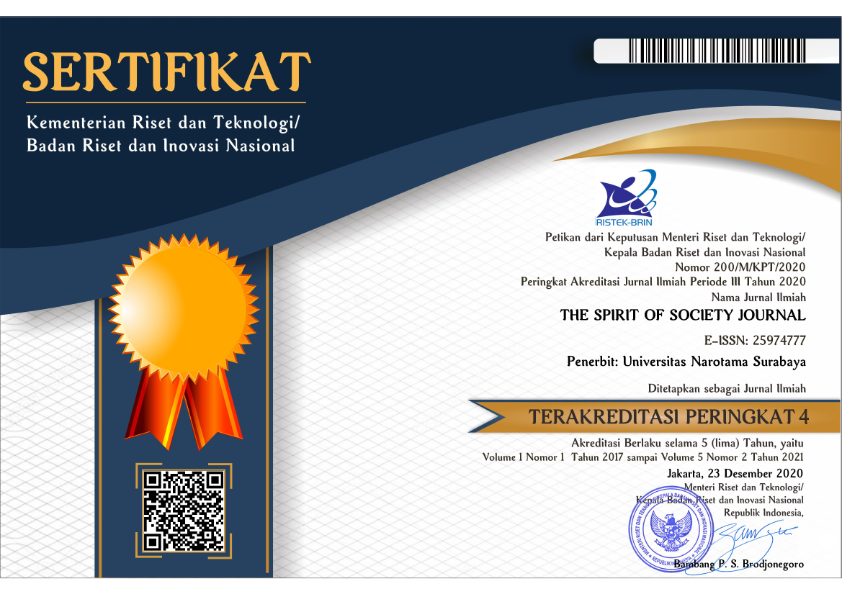Pedestrian User Satisfaction Analysis
Abstract
the role played by pedestrian is noticeably becoming more important as part of transportation infrastructure. The number of pedestrian user increases especially in the big cities’ business district. Therefore, this study was constructed to study the pedestrian users’ satisfaction to the side walk facility. The study was conducted in the city of Surabaya, the Indonesian second biggest city. The study aimed the pedestrian users in some of the busiest districts in central of Surabaya. On the other hand, there have been many policies made by the Surabaya government to improve the pedestrian performance especially the side walk facility, such as making the pedestrian to be more colorful and attractive. The study used qualitative method and Importance Performance Analysis (IPA). There are twenty variables used as addressed objects to measure pedestrian users’ satisfaction level, which are civil service police, greening, parking space, bus stop, parking meter, intercept area, main hole, public sitting, bollard, pedestrian floor motif, disability facility, hand wash facility, portable toilet, direction map, street vendors, drinking water facility, pedestrian decoration and trash bin. The result shows that there are only two variables preforms above their importance level. The average of importance level is 4,021 while the average of performance level is 3,743. There is -0,278 gaps which indicates that the pedestrian performance is under the pedestrian users expectation. Moreover, based on the IPA, there is no one of the variables place in the first quadrant (high leverage, attributes to improve), while there are seven variables place in the second quadrant (attributes to maintain). There are eight variables performing as in the third quadrant (low priority) and lastly there are five variables perform as in the fourth quadrant (low leverage, attributes to de-emphasize).
Downloads
References
Badan Pendidikan dan Latihan Perhubungan Pusat Pendidikan dan Latihan Perhubungan Darat, 1995, ”Teknik Survai Lalu Lintas dan Angkutan Jalan (16 JT + 56 JP)”, Jakarta.
Brandt, D.R. 2000, An Outside-In Approiach to Determining Customer-Driven Priorities for Improvement and Innovation, White Paper Series, Volume 2
Iswanto,D. 2006, Pengaruh Elemen – Elemen Pelengkap Jalur Pedestrian Terhadap Kenyamanan Pejalan Kaki, Volume 5 No. 1. Maret 2006 Jurnal Ilmiah Perancangan Kota dan Permukiman
Rohmawati & Natalia. 2018, Tingkat Kepuasan Pejalan Kaki Terhadap Trotoar Di Kota Bandung, Jurnal Ilmu Politik dan Komunikasi Volume VIII No. 2
Tamin, O.Z., 2000, ”Perancanaan dan Pemodelan Transportasi”, Penerbit ITB, Bandung.
Copyright (c) 2021 THE SPIRIT OF SOCIETY JOURNAL

This work is licensed under a Creative Commons Attribution-ShareAlike 4.0 International License.












